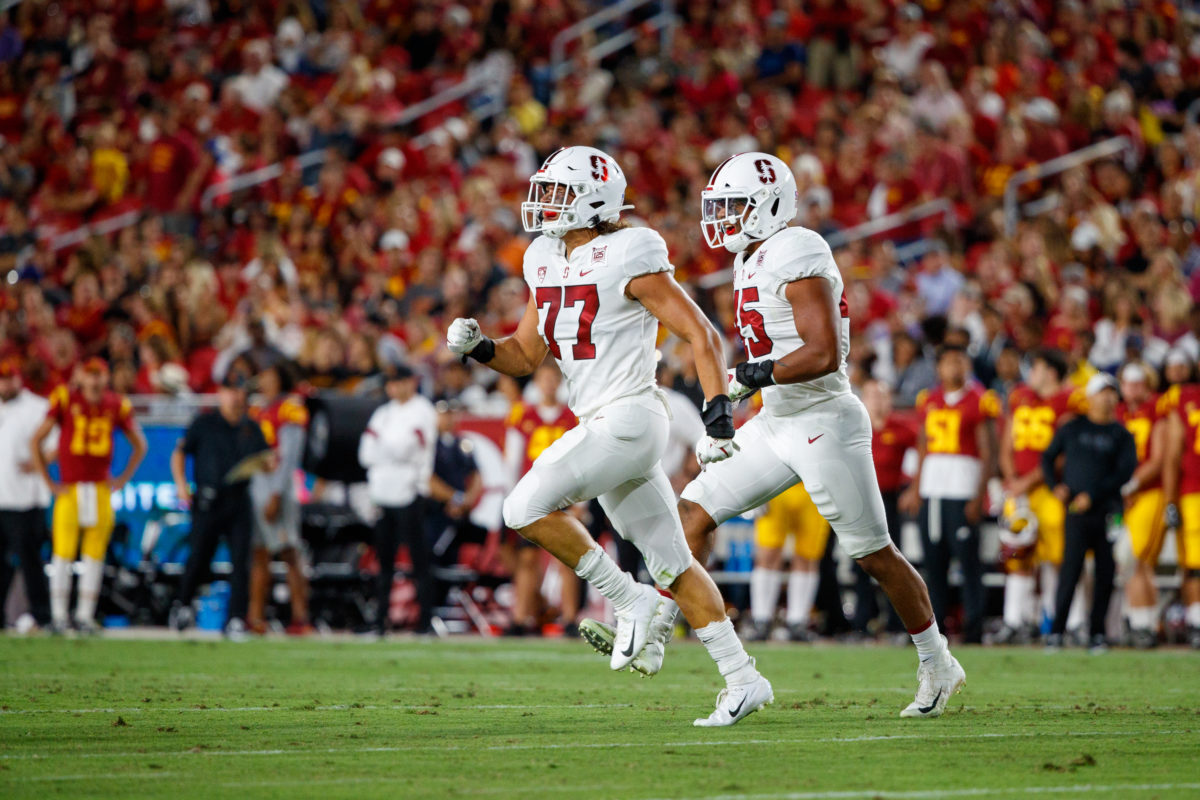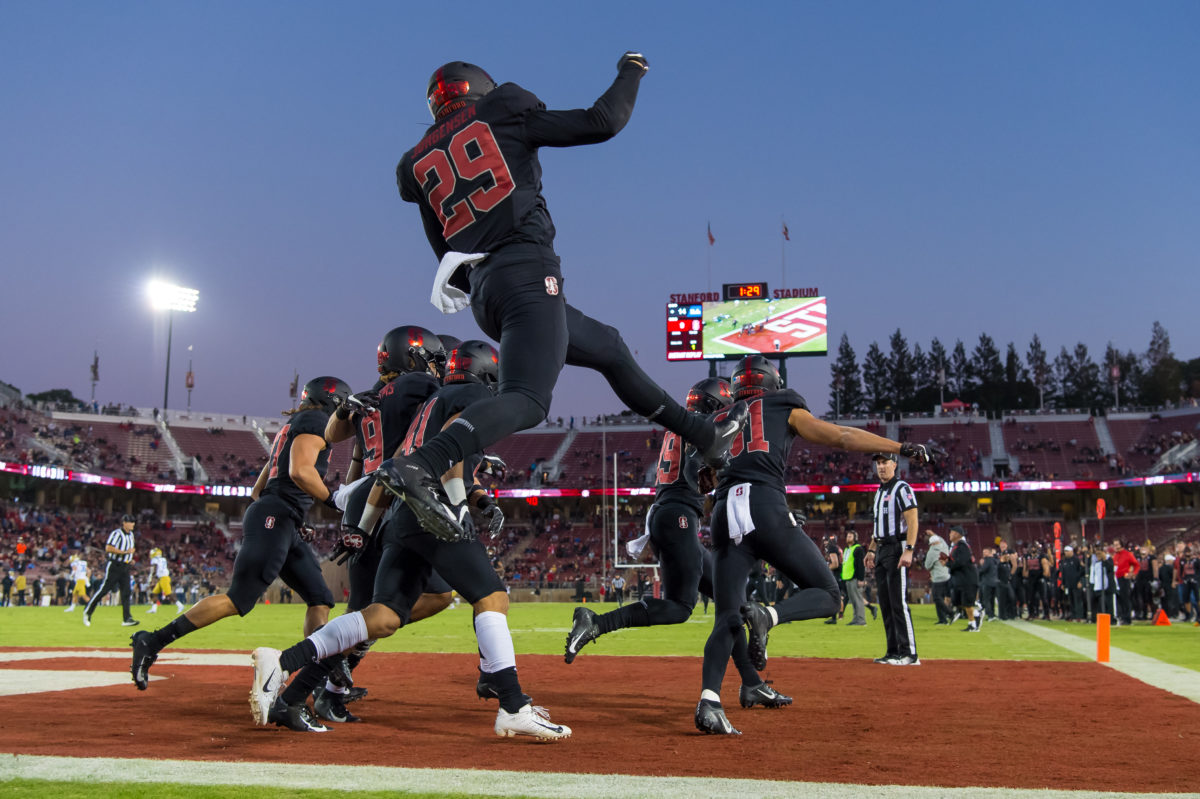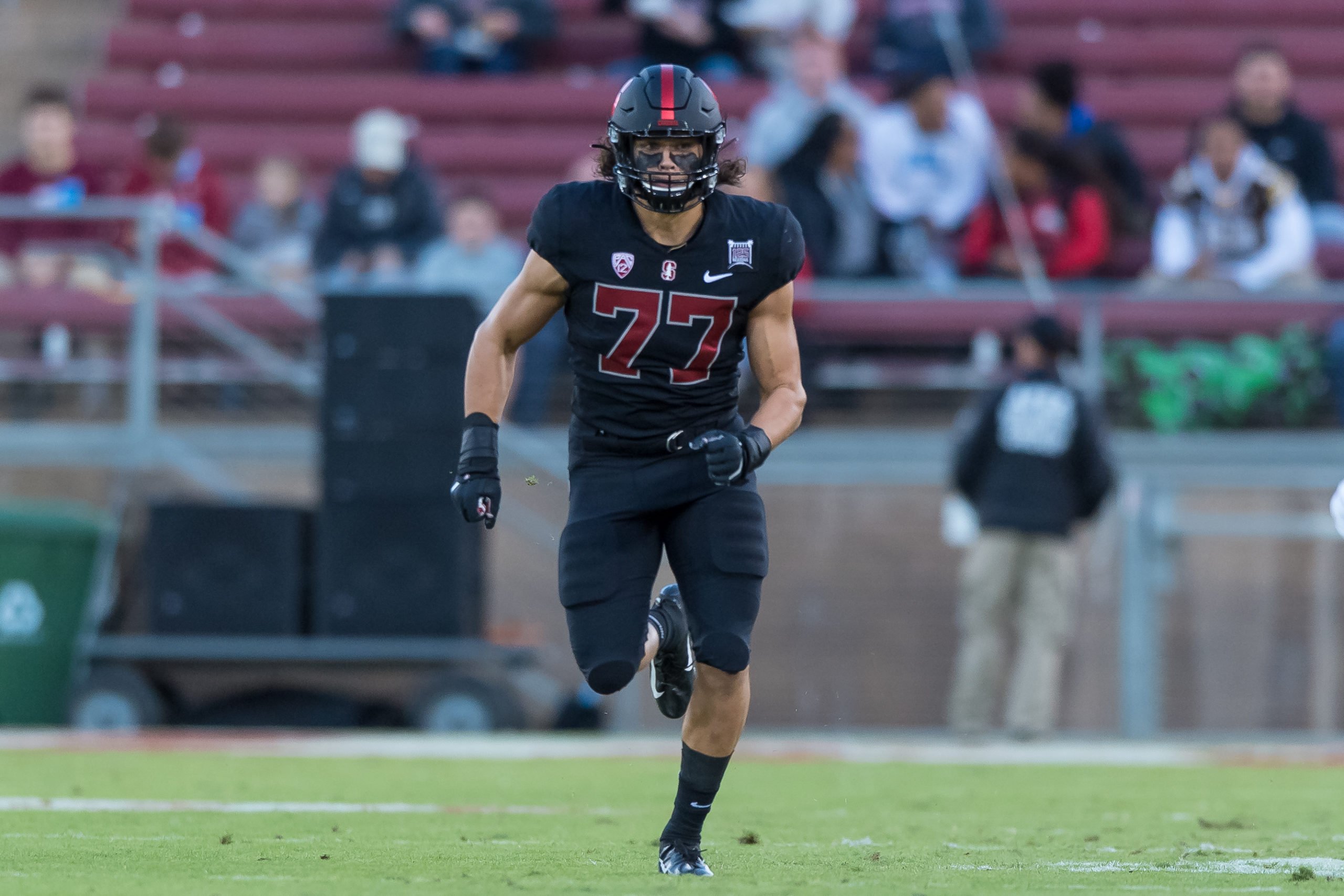On Saturday, as the offense and defense were spread apart in their stretching lines to close practice exactly two weeks before Stanford kicks off the season against Oregon in Eugene, head coach David Shaw ’95 called two players up for a competition. One one side, there was Thunder Keck, a senior outside linebacker, and on the other was Spencer Jorgensen, a sophomore who played 10 games last year on special teams.
Shaw lined Jorgensen up on the side of the field with the offensive players and Keck on the side where the defensive players were stretching.
“I thought we were gonna have to do something crazy, like fight,” Keck said.
“I get suspicious because Thunder is a lot bigger, stronger than I am,” Jorgensen said. “I was like, ‘Whatever competition this is going to be, I’m not really sure how it’s gonna turn out.’”
Then Shaw interjected. There was no competition, only an announcement. Jorgensen and Keck would be put on scholarship.
Congratulations to @ThunderKeck and Spencer Jorgensen, who were placed on scholarship after tonight's practice!#GoStanford pic.twitter.com/pDXVAdGggz
— Stanford Football (@StanfordFball) October 25, 2020
Soon after, Keck and Jorgensen were mobbed by their teammates.
Go get the ball
More than anyone else on Stanford’s roster, Keck is new to football. His first experience came when he prepped at Hotchkiss School in Lakeville, Connecticut, where he recorded six sacks, two passes defended, two forced fumbles and a fumble recovery in just six games. More of his experience came in track, though his father Eric had played football at Saddleback College and Columbia.
When he arrived on the Farm as a walk-on in 2017, Keck’s football knowledge lagged behind his peers. Last year, defensive coordinator Lance Anderson shared a memory from a meeting during Keck’s freshman season in which Keck didn’t know what “the flat” meant when he was told where to go in coverage.
“In high school, they kind of just told me to go get the ball,” Keck said.
“There was a lot of terminology I wasn’t familiar with. I just tried to watch as much film as I possibly could and stayed in the football facilities as much I could to be around people, who knew more, to be able to ask questions.”
Keck set small goals for himself. His redshirt sophomore year, the goal was to get on the field as much as possible, which meant playing a lot of special teams. The next goal, a bigger one, was to get on the field on defense. The next step was to get meaningful snaps on defense, not just at the end of games.
In the weight room and in meetings, Keck set up more goals. First to learn the entire playbook for what he needed to do on each play, then to learn what all 11 players were supposed to do on each play.
Over the past two seasons, Keck has accomplished those goals and was rewarded on Saturday.
“I was super excited,” Keck said about being put on scholarship. “That’s something I’ve been working toward for a long time. At the same time, it’s not something I necessarily have been thinking about while I’ve been here, just because it’s so out of your control.”

Keck has seen the field in 21 games over the past two seasons. Special teams coach Pete Alamar described Keck as “a guy who shows up.”
“I didn’t even realize until this camp season how much of a role confidence plays in football,” Keck said. “Honestly, I think the scholarship is something that’s going to help with that as well, just knowing that other people are recognizing that.”
After Shaw’s announcement, Keck got to lead the team’s breakdown. He had a message for all of Stanford’s walk-ons: “it’s just a label; it doesn’t really determine how much you can contribute and what you can do as a player.”
“Although it was a huge honor and a big relief, in terms of my development as a player, there’s a lot I still want to accomplish, and a lot that I feel like I accomplished without the scholarship as well,” Keck said.
Zoom background
By week three of last season, Stanford was 1-1 but hampered by injuries. That is when special teams quality control analyst Matt Moran told Jorgensen to be ready to play.
His first thought was that he was “juiced,” not expecting to see the field in his third game. Still, in the back of his mind, he heard his coaches’ voices telling him, from the beginning, to be ready for his opportunity.
Playing in the next four games, Jorgensen executed his role. Still searching for his big moment, an opportunity came against UCLA. Alamar called punt block left, Jorgensen got his hand on it, and now-junior wide receiver (and former walk-on) Brycen Tremayne recovered it in the end zone for a touchdown.
In addition to producing six points, the play also produced a photo that has become Alamar’s Zoom background. While celebrating in the end zone with his teammates, Jorgensen went skyward.

When Jorgensen had his first meeting with his coach and saw the photo, he was excited, but not nearly as excited as he was for making the play and celebrating. Jorgensen compared the moment of blocking the punt to receiving the scholarship.
“We had another experience with it on Saturday night,” Jorgensen said. “There’s nothing like that feeling when everybody comes together and celebrates each other’s success.”
“So much love in that huddle, so much celebration of another person,” Jorgensen said. “It really speaks to the character of the guys on this team and how they’re able to be so selfless and be so supportive of really a huge moment for Thunder and [me].”
The scholarship itself is a double-sided coin. On one side, it is a huge opportunity and a burden lifted, and on the other it represents added responsibility.
“It means everything honestly; it’s a huge blessing and an honor,” Jorgensen said about the scholarship. “It was big for me to feel the trust for my coaches, to feel like that was gonna be a worthwhile investment.”
Evaluating Jorgensen’s 2020 outlook, Alamar said “we’re anticipating getting good things out of him in the kicking game.” On the defensive side, Jorgensen has moved from safety to inside linebacker within the last two weeks.
Keck said the on-again, off-again season gave him “whiplash,” but both he and Jorgensen received a strong commitment from Shaw and Stanford: a scholarship.
Contact Daniel Martinez-Krams at danielmk ‘at’ stanford.edu.
